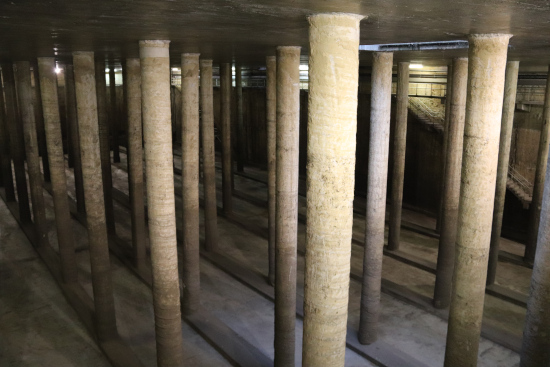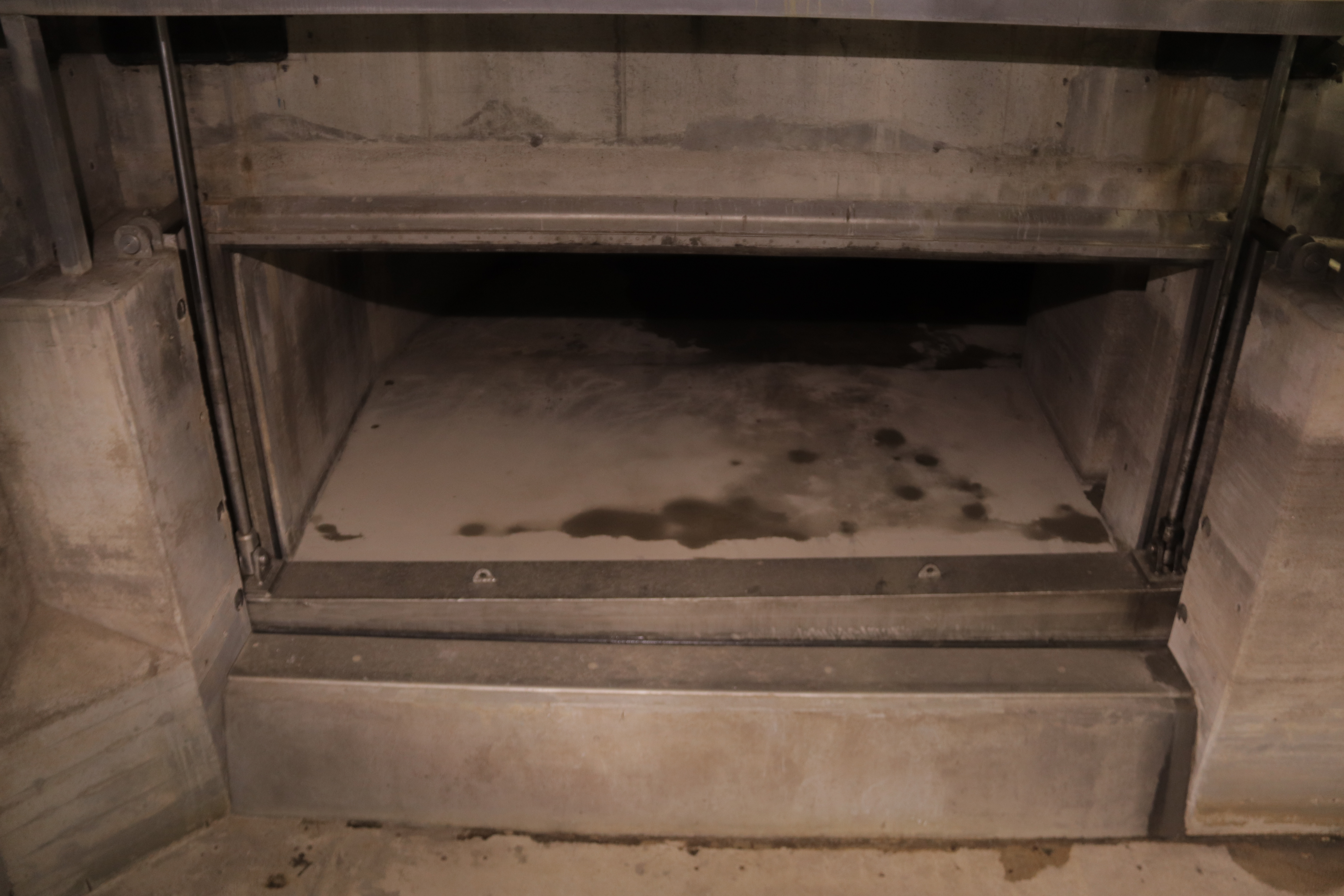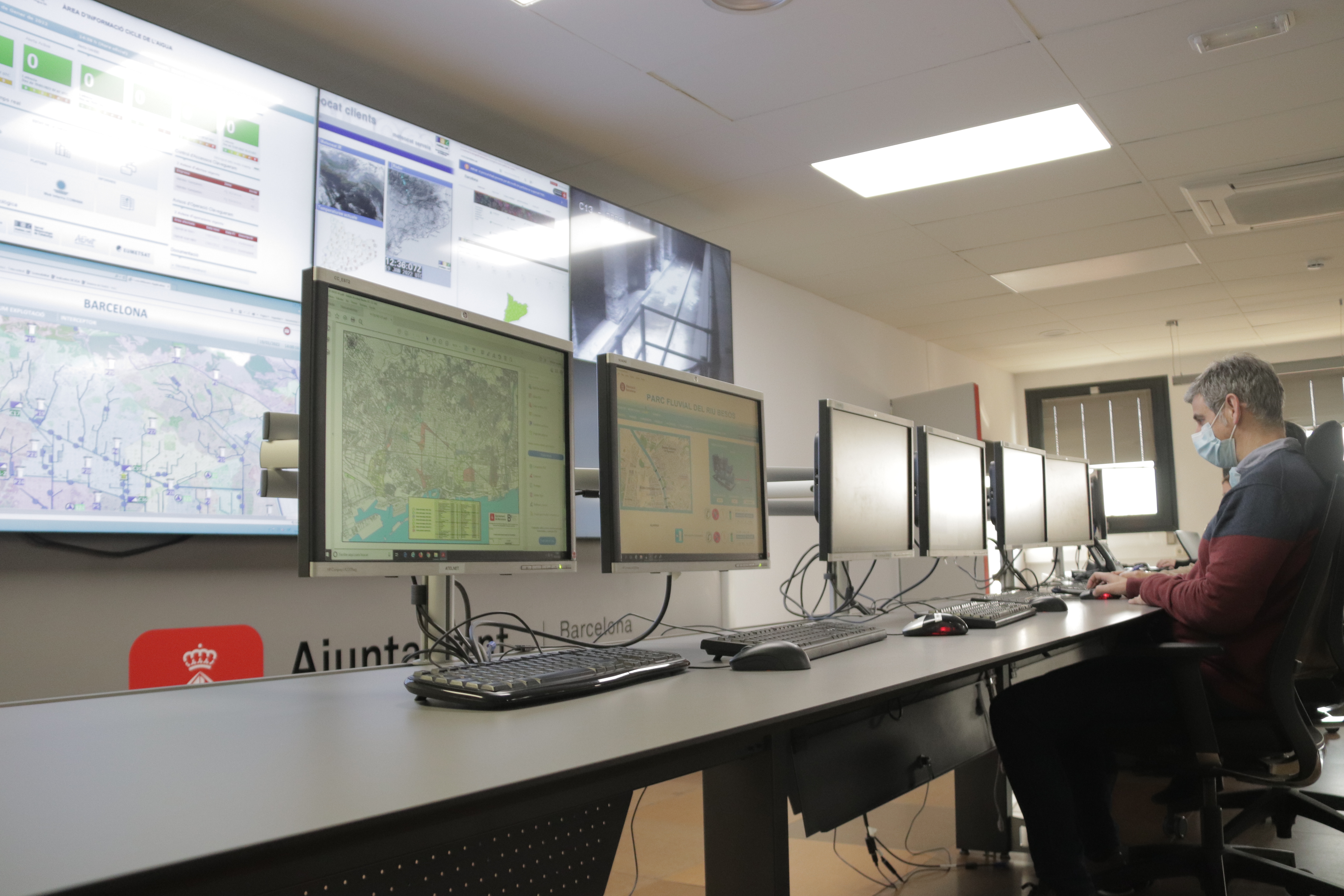Rainwater collection deposits: massive hidden facilities that prevent Barcelona flooding
A control center monitors every single detail in Barcelona when it drizzles and pours, from 74,000 drains to 1,600km of sewers

Beneath Barcelona's Joan Miró park, in between Plaça Espanya and the Sants train station, is a secret place, hidden from outsiders but not for its size.
The biggest of the Catalan capital's 13 underground rainwater collection deposits lies here, divided into two sections, the largest of which measuring 17 meters deep and capable of retaining 55,000 m3 of water – the equivalent of some 20 Olympic swimming pools.

In the event of rain, facilities like this one hold water to avoid flooding.
If all cogs in the machine work as they should, rain falls through the drains on the street and, along with wastewater it goes into sewers before being transferred to a large collection point by the sea, then on to a water treatment plant that will discharge clean water into the Mediterranean.
Yet, to make sure the system copes in the event of heavy showers, rainwater collection deposits hold water for the duration of the whole rain episode to prevent, as much as possible, treatment plants from having to pour dirty water into the sea.
The deposit beneath the Miró park has automatic mechanisms to release water through its floodgates, but there is also a Plan B in case procedures need to be activated manually in the event of a failure in the system.

Places like the one underneath this park, as well as sewers and the 13 underground deposits and water treatment plants, are key to making sure streets remain safe even when the rain falls heavily.
Yet, there is another element that can easily be forgotten but that needs to be taken into account: when there’s a rain alert, many of the 74,000 drains in the city are given an extra clean to avoid flooding. This is because drains getting clogged with leaves or sediment is a common cause of an excess of water on streets when it rains
Everything is supervised from the water control center managed by Barcelona Cicle de l’Aigua, a company owned by the city council, whose headquarters are in the Zona Franca industrial area.

They monitor sewers’ levels in dry and wet weather, issue rain and wave alerts, supervise that all automatic mechanisms are working and take action otherwise, deal with drains, make sure the paths along the Besòs river bank do not risk being flooded (and order their evacuation if needed,) and also work to avoid floods when it rains. They deal with deposits and their floodgates, but not only that.
"When the first drops of rain fall, we give a heads-up to the staff working in the sewers so that they leave," says Gemma Barnet, a manager in the operations department, to Catalan News.
Police officers who may be working underground are also alerted, and this control center works too in collaboration with firefighters and civil protection authorities. The whole system is able to cope with any scenario but for some very exceptional extreme weather events that occur only every ten years or so.

What does this company do when it is not raining? They make sure sensors measuring levels in sewers, the quality of water, and rainfall are working in the correct order. They also make sure all automatic functions in the whole machine work when needed, or move water in sewers from one side of the city to another through floodgates.
Yet, Barcelona Cicle de l’Aigua is not only dealing with floods: the city is rich in groundwater, and this company has to ensure this natural resource is used for cleaning the deposits and streets, watering certain green areas, and supplying decorative fountains.
"Fountains like Montjuïc's Magic Fountain have a recirculation system to reuse their water, but it originally comes from groundwater," explains Barnet.

Several hydrants can be found throughout the Catalan capital so that the firefighters can at any time use groundwater for their emergencies.
All in all, Barcelona residents are walk every day above some 1,600 kilometers of sewers. Some of them are available for visits, although underground enthusiasts will have to wait until the end of the pandemic restrictions to resume their adventures.